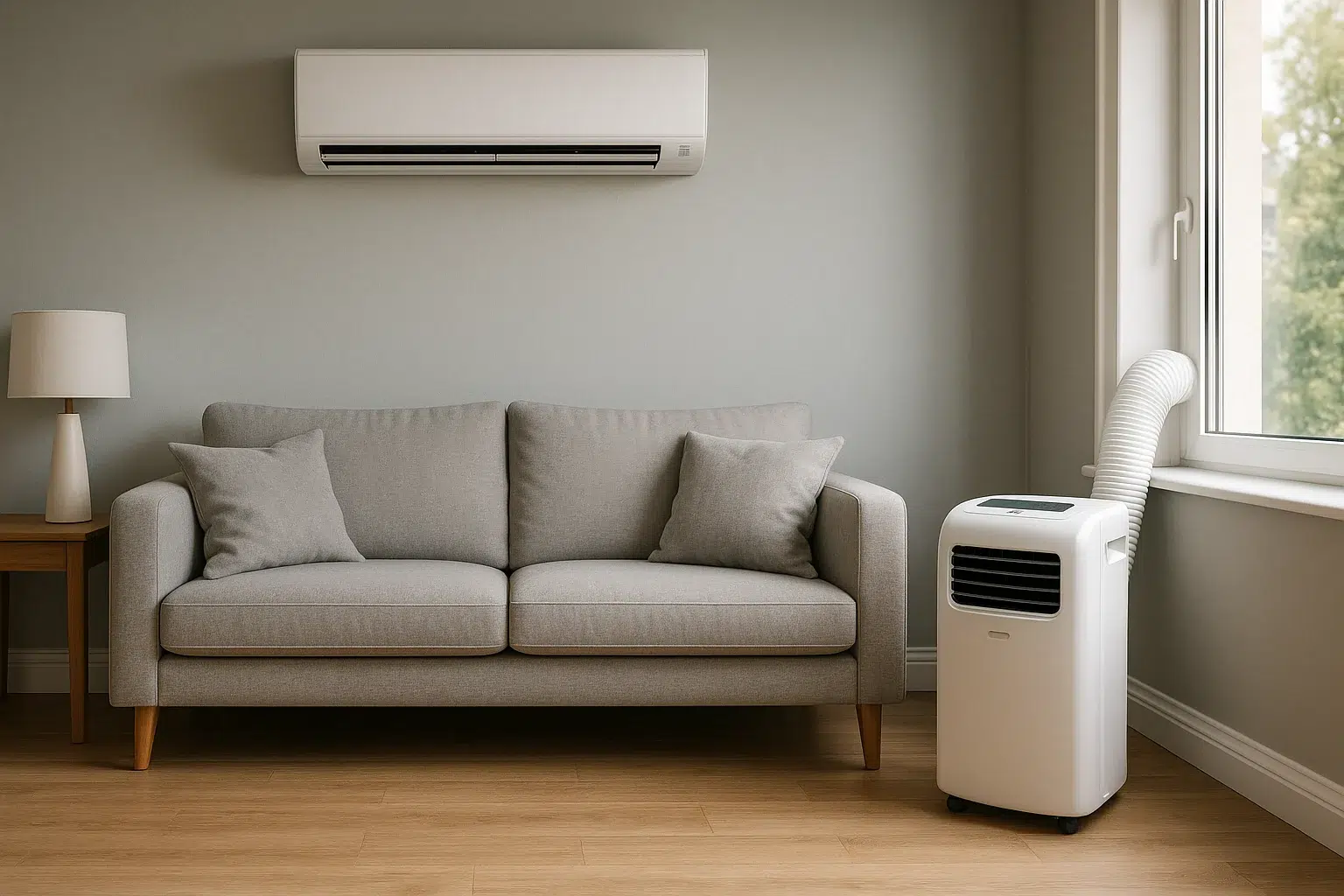Ice Machine Cleaning
Ice Machine Cleaning Schedule: Simple Weekly, Monthly And Quarterly Tasks Running a bar, cafe or…
The Honest UK Guide for 2025
Summer in Britain is no longer the polite 22 °C affair it once was. When your phone pings with a 30 °C heat alert, you have two realistic options in the domestic market:
Both cool a room, but the long-term savings, comfort and carbon footprint differ dramatically. Below is a human-centred, numbers-backed look at each option so you can make the call with confidence.

| Factor | Split System | Portable AC |
|---|---|---|
| Up-front price (typical 12 000 BTU UK) | £750 unit + £1 150 install (total ≈ £1 900) | £240 – £800 all-in |
| Power draw (average) | 480 W (0.48 kWh/h) | 700 – 1 500 W (0.7-1.5 kWh/h); some larger models hit 2.5 kW |
| Running cost @ 27.03 p/kWh (Ofgem cap Apr-Jun 2025) | ≈ 13 p per hour | ≈ 19 p – 41 p per hour |
| Noise | 19-38 dB (library-quiet) | 50-65 dB (vacuum-cleaner territory) |
| Adds winter heating (heat-pump mode) | Yes, COP 3-4 (up to 300 % efficient) | Rarely, and efficiency is lower |
| Aesthetic & space | Sleek indoor head; outdoor condenser | Bulky box + hose, needs clear window |
| Best for | Long-term comfort, year-round use, property owners | Renters, occasional heatwaves, single rooms |
A split system has two halves: an outdoor compressor and an indoor air handler connected by refrigerant lines. Because the compressor lives outside, the indoor unit is whisper-quiet. Modern inverter technology throttles the compressor speed, so the unit sips rather than gulps electricity once the set-point is reached.
Everything compressor, fan, evaporator sits inside a single wheeled cabinet. Heat is blown outdoors through a flexible hose that you hang out of a window. The unit must work harder because some of that hot exhaust sneaks back into the room around the window gap, and the noisy compressor is right beside you.
Split: 12 000 BTU wall-mounted system + F-Gas-qualified install averages £1 900 in 2025 . Multi-room or concealed ducted systems climb from £3 000+.
Portable: A decent 9-12 k BTU model costs £240 – £800 delivered . No installer needed, though you may want a proper window-sealing kit (~£25).
Take-away: Portables win on day-one cost; splits win on property value and aesthetics.
Split: ~0.48 kWh per cooling hour in a UK climate. At the spring 2025 price cap (27.03 p/kWh) that’s ≈ 13 p/h .
Portable: 0.7-1.5 kWh/h for mainstream models – roughly 19 p-41 p/h at the same tariff .
Imagine you run cooling 500 hours each summer (roughly 5 h/day during a 100-day warm spell):
Seasonal cost
Split (0.48 kWh × 500 h): £68
Portable (1 kWh × 500 h): £135
But factor in:
Heating mode: A split doubles as a highly efficient heat pump in spring/autumn, trimming electric, oil or even gas bills by up to 40 %.
Lifespan: Splits last 12-18 years with proper servicing; portables average 5-7 years before compressors or hoses fail.
With heating taken into account, most homeowners see the split’s extra cost paid back inside 6-8 years well within its service life.
Split: Indoor heads whisper at 19-30 dB quieter than leaves rustling and sit high on a wall. Outdoor units can be boxed-in or placed on a flat roof.
Portable: 50-65 dB; you’ll raise your voice during TV adverts. The 30-cm-diameter exhaust hose keeps a window ajar, so expect warm air leaks and the occasional spider cameo.
| Task | Split | Portable |
|---|---|---|
| Filter clean | DIY every 2-4 weeks | DIY weekly in peak season |
| Professional service | Annual F-Gas check (£120-£160) | None required (unit is disposable) |
| Refill/re-gas | Rare only if leaks occur | Not possible (sealed) |
| Typical life | 12-18 years | 5-7 years |
A split in cooling mode typically draws half the wattage of an equivalent portable; in heating mode its Coefficient of Performance (COP) of 3-4 means 3-4 kWh of heat per 1 kWh of electricity . Over a decade, that can shave 1-2 tonnes of CO₂ from an average UK household’s footprint, assuming the grid mix continues to decarbonise.
Renting or short-term lease: No planning permission, no drilling.
Listed or conservation property: External condensers sometimes banned.
Emergency heatwave use: Buy today, sleep cool tonight.
Single tiny room (< 15 m²): A 7 000 BTU portable is inexpensive and adequate.
Home office or bedroom where noise equals lost productivity/sleep.
Year-round climate control: Cooling in July, efficient heating in March and October.
Property value: Adds a premium in the estate-agent listing, especially in London and the South-East.
Multi-room efficiency: One outdoor condenser can feed up to five indoor heads.
Upfront vs ongoing: Portables are cheaper today; splits are cheaper tomorrow.
Comfort delta: Splits are quieter, draught-free and maintain steadier humidity.
Energy future-proofing: Electricity may remain pricey, but efficiency gains favour splits—especially models hitting A++ SEER ratings.
Think heating, too: A reversible split can chip away at spiralling winter costs while gas prices stay volatile.
Be Cool Refrigeration specialises in designing, installing and maintaining split and multi-split systems across the UK. Our F-Gas engineers handle everything from heat-load calculations to discreet trunking so you enjoy hotel-grade comfort without the eye-watering bill.
👉 Book a free home survey or browse our Air Conditioning Installation page for package pricing and finance options.
Ice Machine Cleaning Schedule: Simple Weekly, Monthly And Quarterly Tasks Running a bar, cafe or…
Enhance Climate Control with Advanced VRF Air Conditioning Variable Refrigerant Flow (VRF) air conditioning offers…
Top 20 Cold Room Manufacturers in the UK (2025 Update) Whether you’re running a restaurant,…
Daikin vs Mitsubishi – the 2025 UK Buyer’s Guide A Be Cool Refrigeration deep‑dive Why…
Inverter vs Non-Inverter AC: Your Friendly Guide to Smarter Cooling Choosing the right air conditioner…

Address:
Office 7, 35/37 Ludgate Hill
London, EC4M 7JN
Expert Insights, Maintenance Tips, and the lates updates on Air Conditioning & Refrigeration.


Address:
Office 7, 35/37 Ludgate Hill
London, EC4M 7JN
Air Conditioning Maintenance & Service


 Split vs Cassette AC
Split vs Cassette ACT&C’s apply
portable ac or split ac, portable ac vs split ac, mini split vs portable ac, split ac vs portable ac, portable aircon vs split air conditioner, portable ac unit london, portable or fixed air conditioning, portable vs wall mounted air conditioner, portable air conditioner split system, portable mini split air conditioner, split ac reading, portable split air conditioner, portable split ac, air con units, portable split air conditioner uk, air conditioner units, small room air conditioner
portable ac or split ac, portable ac vs split ac, mini split vs portable ac, split ac vs portable ac, portable aircon vs split air conditioner, portable ac unit london, portable or fixed air conditioning, portable vs wall mounted air conditioner, portable air conditioner split system, portable mini split air conditioner, split ac reading, portable split air conditioner, portable split ac, air con units, portable split air conditioner uk, air conditioner units, small room air conditioner, air conditioner for room
